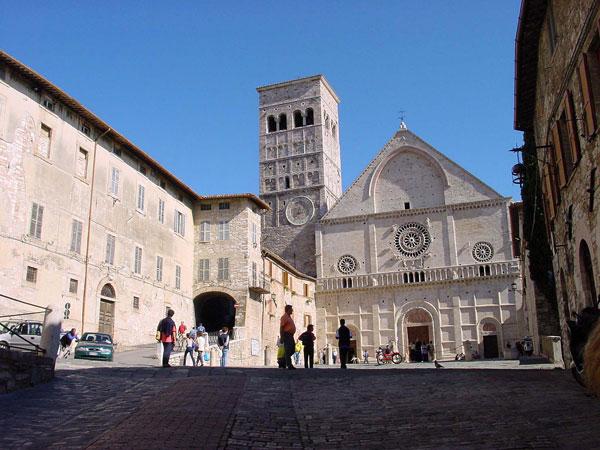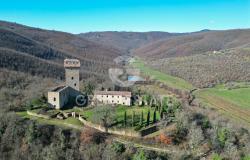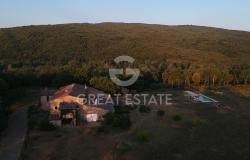The Italian piazza, the very core of the community, is a magic balance of nuance and human scale that has grown beautiful through usage over hundreds, even thousands, of years.
Countless times I’ve suffered the architectural nightmares that ring so many towns. Ignoring the ugliness, I train my eyes to look for the black and white bull’s-eye sign that directs me toward Centro. Finally my husband and I abandon the car and proceed on foot through arches, and winding streets until suddenly the town opens up to reveal it’s soul: the piazza – the heart of the town, its rhythm, its life.
When I enter a piazza for the first time, I feel a delicious frisson as if being both the spectator and the one being observed, like a teenager at a dance. For me a town is not judged by its museums and masterpieces, but by its piazza. At its best it is an island of tranquillity, a convenient place to meet, a market place, concert venue and playground. Piazzas are a balance of tolerance and anything goes, but don’t try to remember their names. Piazza Baldaccio will be called Garibaldi after the statue at the side (above), Piazza della Torre became Mercato or Centro because the tower was blown up in the war and no one has bothered to officially rename it.
A Bloody Past
Piazzas could also be places of tragedy. The great painter Michelangelo Merisi da Caravaggio murdered a man in a duel after playing tennis in Campo Marzio in Rome. Shakespeare set his fictional duel in Romeo and Juliet in a piazza, as did Merchant Ivory in A Room with a View. Outside my son’s school in the Tuscan town of Anghiari, you can visit the chapel in the Comune where the guilty were sent into a cell for one last night to repent their sins before justice was dispensed by noose or sword in the piazza at dawn the next day. Every time I enter the spectacular Piazza della Signoria in Florence, I locate the place where the condemned heretic priest, Savonarola, took his final walk to the scaffold where he was hanged and then burnt with two of his followers at the end of the 15th century. In more modern times the blood of World War Two partisans has stained the flagstones of many piazzas, with only fading photographs recalling their martyrdom.
Ancient Roots
When the ancient Romans built their towns, they began with a road grid based on two main thoroughfares – the cardum and decumanum. Where these two roads crossed was considered sacred ground. This open space was dominated by an imposing temple on one flank, a civic building (forum) on another with a central marketplace, sometimes with colonnaded shops and tenements above. In many towns today the plan is still in place and the market is still held in the piazza. My favourite examples of this classic layout are the Piazza della Rotonda facing the Pantheon in Rome (left) and The Piazza del Commune in Assisi with façade of the Temple of Minerva, still overwhelmingly beautiful. Other piazzas dating from Roman times take their shapes from other sources. The oval medieval Piazza Mercato in Lucca is built on the foundations of a Roman amphitheatre. Traces of the original masonry can be still seen, incorporated into the houses. In Rome itself, the foundations of the buildings facing the famous Piazza Navona are the ruined grandstands of the vast Stadium of Domitian.
As the Roman Empire collapsed, the rise of the Comuni dictated the shape of urban architecture. Instead of bold vistas, hilltop communities looked inward for their security and many piazzas are found snuggled deep within high walls, houses comfortably gazing at one another, oblivious to the cruel world that lay beyond the safety of the fortifications. This period in history created what is arguably one of the greatest piazzas of all time: the Piazza del Campo in Siena. Its unique raked fan shape makes it a natural amphitheatre, a perfect place for a leisurely picnic lunch among the university students, but the steep gradient and the sharp corners play havoc with the bareback riders of the twice-yearly Palio. The late medieval period saw the rise of the Venetian Republic and the other great piazza: Piazza San Marco (lower, right). Napoleon called it ‘the most elegant drawing room in Europe’ and with the competing orchestras of Quadri’s and Café Florian instilling life to a nearly perfect architectural square flanked by the Byzantine splendour of San Marco, it still evokes awe from the most jaded tourist.
The Piazza comes of Age
Hundreds of Italian cities reached their peak during the Renaissance. The town became the symbol of power and new piazzas were designed by architects for the first time. Michelangelo designed both the façades of the buildings and the geometric paving of the exquisite Piazza del Campidoglio in Rome, one of the finest examples of a grand Renaissance piazza, but for me, Piazza Pio II in the Tuscan town of Pienza (above) is the ultimate. A gem of 15th-century architecture, the town is a perfect realization of the humanist principle of design.
The grandest age of the piazza was the Baroque and its greatest exponent Bernini. This prodigiously talented architect and sculptor, who worked in Rome in the 17th century, designed the Fountain of the Four Rivers in Piazza Navona and with others that masterly work of city planning, Piazza del Popolo. Only Bernini had the genius and problem-solving skills to create the Colonnade around the Piazza San Pietro. Here the Pope blesses the crowds from his balcony above the square. In the form of a universal embrace, with proportions which do not clash with the imposing façade of Saint Peter’s Basilica, this piazza is surely one of the grandest and most famous in the world.
There is a marvellous dichotomy of being both an intruder and a part of the action. The piazza needs people, it embraces and envelopes its populace. People are its decoration, like jewels in a necklace. The piazza is a theatrical stage where I sit and listen to the players. A mother consoles her son, outraged by some playground injustice, ladies sit and men play cards, a patrician argues politics, a Vespa roars, bells chime, the piazza throbs with life.









